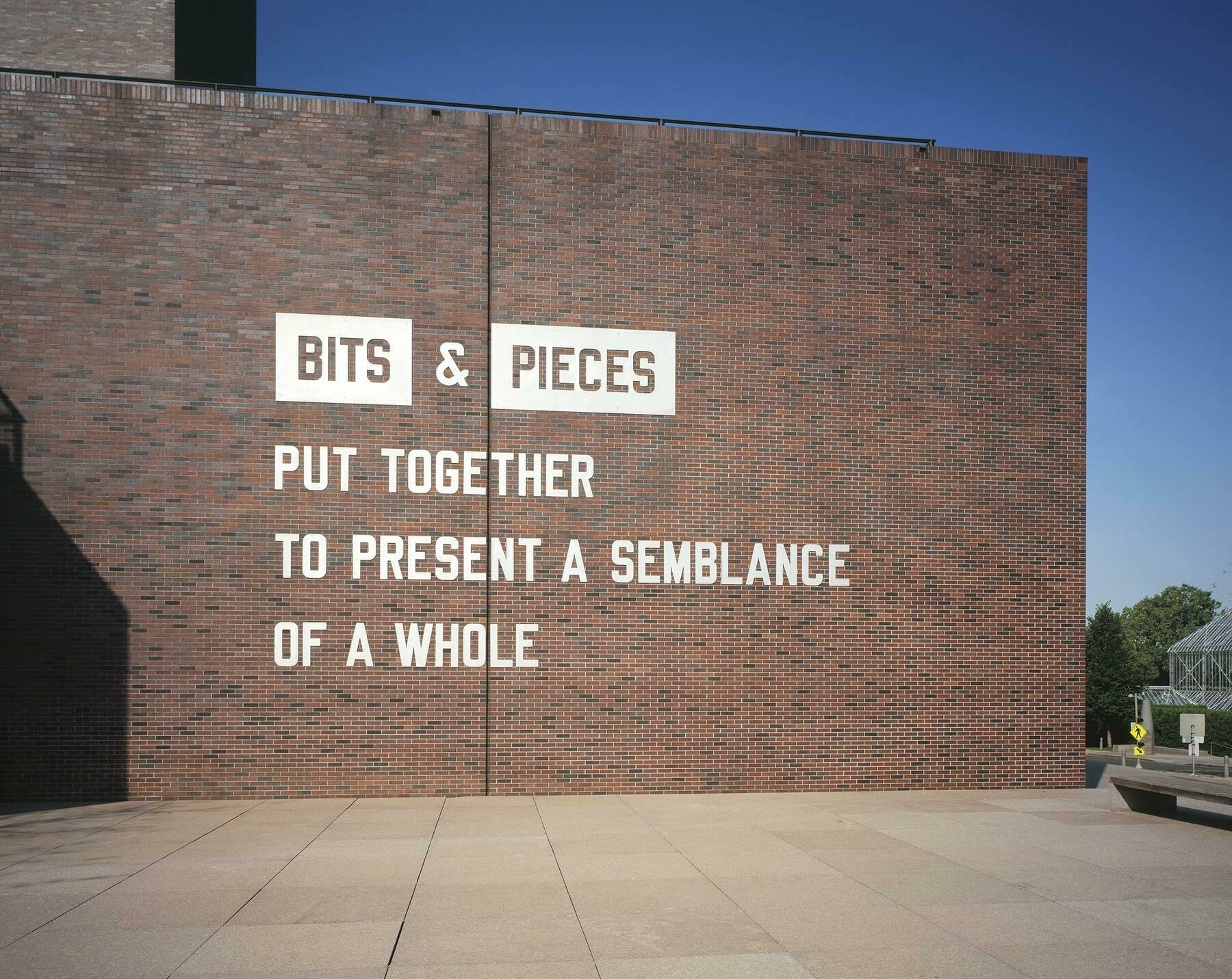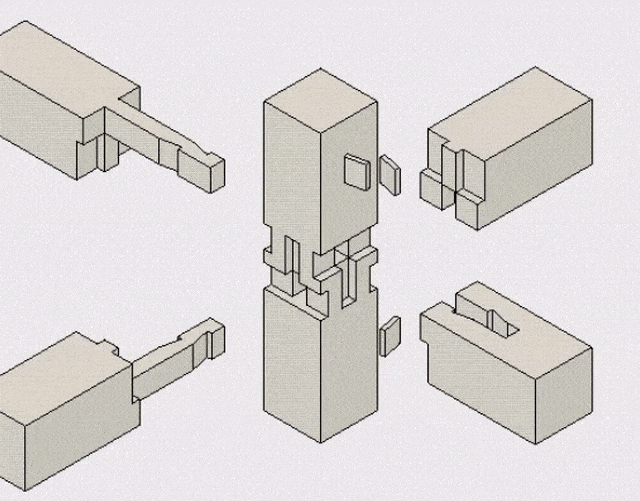From fragments you can build a greater whole
Everything large and significant began as small and insignificant
This is my working philosophy of creativity and I’m trying to follow it through as best I can. Starting with simple parts is how you go about constructing complex systems.
“A complex system that works is invariably found to have evolved from a simple system that worked. A complex system designed from scratch never works and cannot be patched up to make it work. You have to start over, beginning with a working simple system”. — John Gall (1975) Systemantics: How Systems Really Work and How They Fail, p. 71.

Bits and pieces put together to create a semblance of a whole, by Lawrence Weiner
-
Begin with fragments
-
From smaller parts build a greater whole
-
Join your work together
-
Do it seamlessly well
Begin with fragments
In October 1837 the writer Ralph Waldo Emerson prompted the twenty-year-old Henry David Thoreau to start writing a journal. Thoreau took this advice very seriously. He finished up with 14 notebooks, 7,000 pages, and 2 million words. Small fragments can add up to an awful lot. From these bits and pieces he constructed pretty much all of his completed works. What began as jottings ended up as mature reflections.
He claimed his disconnected thoughts provoked others, so that “thought begat thought”. Thoreau wrote in his journal:
“To set down such choice experiences that my own writings may inspire me – and at least I may make wholes of parts.” - Thoreau, Henry David. 2009. The Journal, 1837-1861. Edited by Damion Searls. New York: New York Review Books.
The nest-eggs are what you start off with, without worrying how many you will finish with or what they might later hatch into.
From smaller parts build a greater whole
In a sense, the greater whole is an illusion. Really it’s nothing other than a collection of smaller pieces, joined together in such a way as to encourage the human tendency to see wholes even before it sees parts. As with the artwork of Lawrence Weiner, it’s all Bits and pieces put together to present a semblance of a whole.
These bits and pieces may seem insignificant. Perhaps you really are just another brick in the wall, as Pink Floyd once sang. But without bricks the wall is nothing. That’s pretty much all a wall is. Together the fragments add up to a greater whole, which may well be more than merely a semblance or an illusion. Sometimes the whole really matters. The author David Mitchell concludes his novel, Cloud Atlas with this reflection:
“My life amounts to no more than one drop in a limitless ocean. Yet what is any ocean, but a multitude of drops?” ― David Mitchell, Cloud Atlas
A wall or an ocean is a large or even enormous reality, and without its many small components it would be nothing.
Join your work together

Image Source: TheJoinery_jp
To make a complete work you need to join the parts together with great care. Think of the work of the skilled joiner, who meticulously and ingeniously connects pieces of timber to make a sturdy and beautiful product - whether it be a piece of furniture or an architectural element such as a staircase or a ceiling vault.
Such an effect cannot be created without skill and effort. You can’t just nail two planks of wood together and hope for the best. In the same way you can’t place your notes side-by-side and expect to read a finished piece of writing.
To make your writing coherent you need to become a joiner.
Sönke Ahrens mentions this part of the writing process in his popular book on Taking Smart Notes. Sadly, his advice in this important area remains quite limited.
“Turn your notes into a rough draft. Don’t simply copy your notes into a manuscript. Translate them into something coherent and embed them into the context of your argument while you build your argument out of the notes at the same time. Detect holes in your argument, fill them or change your argument.” – 📚Ahrens, Sönke. 2017. How to Take Smart Notes: One Simple Technique to Boost Writing, Learning and Thinking: For Students, Academics and Nonfiction Book Writers. North Charleston, SC: CreateSpace.
For those who can already write well, the point may be obvious, but for those of us for whom well-made prose doesn’t come easily, it needs to be stressed: the connecting together of thoughts and ideas is almost as important as the thoughts and ideas themselves. The writing must flow.
It is well worth reflecting on Thoreau’s writing practice.
“The thoughtfulness and quality of his journal writings enabled him to reuse entire passages from it in his lectures and published writings. In his early years, Thoreau would literally cut out pages or excerpts from the journal and paste them onto another page as he created his essays.” – Thoreau’s Writing - The Walden Woods Project
But he didn’t just cut and paste. His writing progressed through drafting and re-drafting, from the original raw field notes, to the journal, to his lectures, to essays, and from there to published books. Each of these shifts fine-tuned his writing until ultimately he had a very well-crafted outcome.
So even though Thoreau cut and pasted snippets of his work, joining small pieces together to make finished pieces of writing, this was very far from a lazy process. Walden, for example, was published after seven drafts, which took the author nine years to complete. I see Thoreau’s justly celebrated work as a prime example of the value of writing slowly.
Do it seamlessly well
If, like Thoreau, you put the bits and pieces together well enough, the readers won’t see the joins.
Or even better, as with the brick courses of the wall on which Weiner’s artwork is mounted, viewers do see the joins but this doesn’t detract in any way from the experience of the whole. You just need to avoid displaying what the German writer and editor Karl Kraus called fragmentary knowledge (Fetzenwissen) - the curse of the Zettelkasten, or card index.
It may be simple, but it’s not easy.
See also: